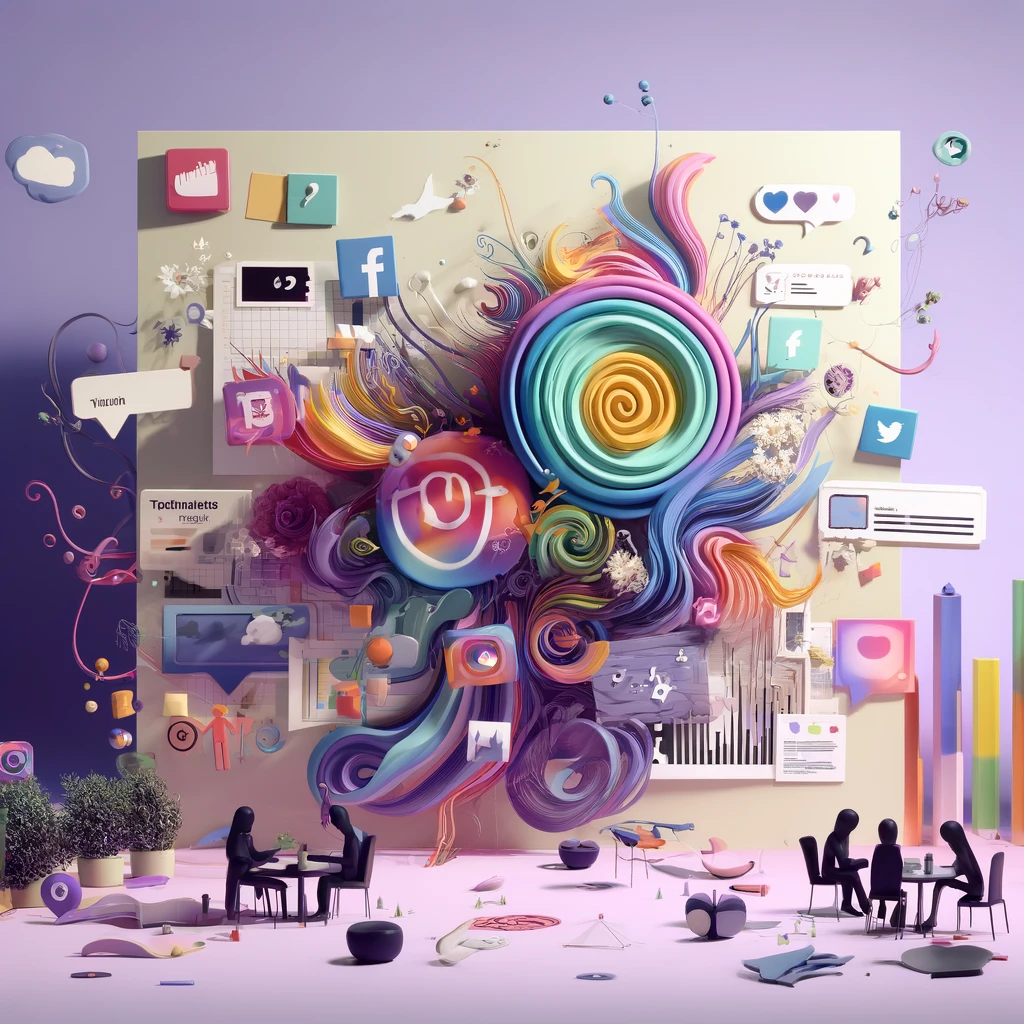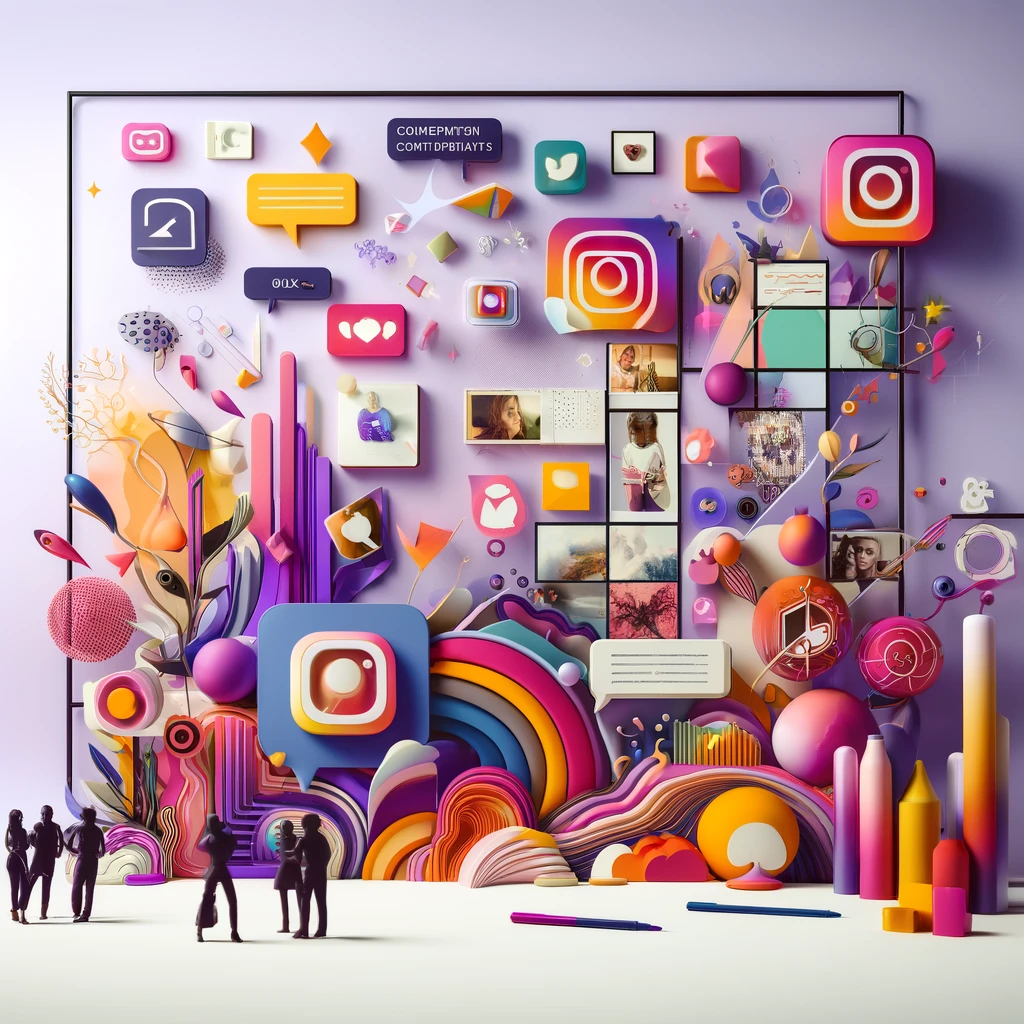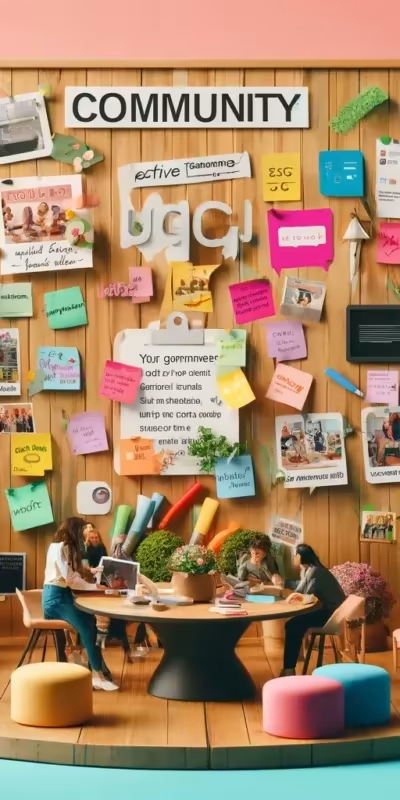Table of Contents
drug rehab user-generated content
Introduction
In the realm of digital marketing, the importance of user-generated content (UGC) cannot be overstated, especially within the specialized context of drug rehab marketing. This chapter delves into the significant advantages that UGC offers to drug rehab facilities, illustrating how it can serve as a pivotal tool in enhancing both engagement and credibility.
User-generated content includes a variety of material such as testimonials, reviews, personal stories, and social media posts created by clients rather than the brand itself. For drug rehab centers, leveraging this type of content can transform marketing strategies in several impactful ways:
- Authenticity and Trust: UGC provides a genuine voice that prospective clients trust more than traditional advertising. Hearing real stories from real people can significantly lower barriers for those hesitant about seeking treatment.
- Enhanced Engagement: Content created by users tends to receive more engagement on social media platforms. This higher level of interaction increases visibility and helps build a community around the facility’s services.
- SEO Benefits: Fresh, unique content is favored by search engines. User-generated content can improve search rankings by keeping the website dynamic and relevant.
- Social Proof: UGC acts as proof that others have had positive experiences with your facility, which can influence decisions and build confidence in your services.
- Cost-Effectiveness: Utilizing content that users naturally produce reduces the need for budget allocation toward content creation, allowing for resources to be directed elsewhere.
By integrating user-generated content into their marketing strategies, drug rehab centers can not only overcome common challenges in the field but also significantly enhance their outreach and patient engagement. Effective management of UGC involves encouraging its creation, curating it to fit the brand message, and ensuring it aligns with all legal and ethical standards, especially considering the sensitivities around medical and personal information.
Consider integrating user-generated content to connect more deeply with your audience.
Contact us today!Understanding User-Generated Content
User-generated content (UGC) is any form of content—such as text, videos, images, reviews, etc.—created by people, rather than brands. In the context of drug rehab marketing, UGC can significantly enhance your strategy by providing authentic and personal content that resonates deeply with both current and prospective clients. This chapter explores what UGC comprises and its intrinsic value for the drug rehab sector.
Types of User-Generated Content
- Testimonials and Reviews: Feedback and stories shared by former patients about their recovery journey.
- Social Media Posts: Content that users create and share on their own profiles, mentioning or tagging your facility.
- Video Diaries and Stories: Personal recovery stories shared through video, which can be more engaging and emotionally compelling.
- Blog Entries: Articles written by clients or community members on their experiences or thoughts related to their recovery process.
Value of User-Generated Content for Drug Rehab
- Authenticity: UGC offers a genuine perspective that brand-created content often cannot replicate. This authenticity can foster trust and reliability in your brand.
- Relatability: Seeing and hearing from peers can make potential clients feel more understood and less alone in their struggles.
- Engagement: Content created by users typically sees higher engagement rates on social media platforms. It is more likely to be shared, liked, and commented on, thus broadening its reach.
- Cost-Effectiveness: Leveraging content that users voluntarily produce can significantly reduce marketing costs while delivering compelling messages.
- SEO Enhancement: Search engines value fresh, original content. User-generated reviews and posts can help improve your website’s SEO by continuously updating your site with unique content.
Incorporating UGC into your marketing strategy is not just about collecting content; it’s about creating an environment where your clients feel valued and motivated to share their stories. It involves recognizing and nurturing the human element of your brand—something particularly impactful in a field as sensitive as drug rehabilitation.

Implement a robust user-generated content strategy to deepen connections and drive conversions.
Let’s make a difference!Strategies for Encouraging User-Generated Content
Engaging your community through user-generated content (UGC) is a powerful strategy for enhancing the visibility and credibility of drug rehab facilities. By encouraging clients, their families, and staff to share their experiences, facilities can create a more relatable and trustworthy brand presence. Here are practical strategies to foster a rich environment for UGC, ensuring your content marketing efforts are effective and resonate well with your audience.
- Engaging Campaigns That Invite Participation:
- Storytelling Initiatives: Launch campaigns that invite patients and their families to share their recovery stories. This could be through video diaries, written testimonials, or photo essays.
- Social Media Challenges: Create hashtags or social media challenges that encourage users to post about their journey. For instance, a “Before and After” challenge showing progress and hope.
- Interactive Content: Use quizzes, surveys, or polls that invite user interaction and produce shareable results that highlight personal stories or recovery milestones.
- Incentives for Sharing Stories and Testimonials:
- Recognition Programs: Recognize contributors in your newsletters or on your social media to honor their courage in sharing their stories.
- Contests and Giveaways: Organize contests where entries are made through personal stories or testimonials, with prizes that support their recovery journey, such as books, wellness retreats, or gym memberships.
- Exclusive Experiences: Offer exclusive experiences or services for clients who contribute content, such as an extra session with a counselor, access to a special workshop, or a feature in your community spotlight.
- Support and Training for Contributors:
- Guidance and Resources: Provide clear guidelines and support for creating content. This can include workshops on how to tell their story, tips for video creation, or templates for writing personal experiences.
- Technical Support: Offer technical help for those less familiar with digital tools, ensuring everyone feels confident to participate, regardless of their tech skills.
- Ethical Considerations and Privacy:
- Consent Forms: Always use consent forms that clearly explain how the content will be used and ensure all posts comply with HIPAA regulations concerning patient privacy.
- Moderation Policies: Implement a robust moderation strategy to ensure that all content shared is appropriate, respectful, and in line with the values of your organization.
By adopting these strategies, drug rehab facilities can create a more engaging, supportive, and vibrant online community. The authentic content produced not only aids in marketing but also strengthens the support network for current and prospective clients.

Implement these user-generated content strategies to enrich your community engagement and enhance your brand’s impact.
Start today!Benefits of User-Generated Content in Drug Rehab
User-generated content (UGC) is a key asset in drug rehab marketing, serving multiple strategic functions that significantly enhance how facilities connect with their audience. Here’s how incorporating UGC can benefit your drug rehab marketing efforts:
- Building Trust and Credibility:
- Authentic Voices: Stories and testimonials from real clients or their families add a layer of authenticity that cannot be replicated by traditional marketing content.
- Relatable Experiences: Potential clients see and hear experiences that mirror their own challenges and triumphs, making the decision process more comforting and secure.
- Enhancing SEO Through Fresh, Authentic Content:
- Regular Updates: UGC provides fresh content that can be integrated into your website, keeping it dynamic and interesting for repeat visitors and new prospects.
- Keyword Rich: Reviews and stories often naturally contain key phrases and terms relevant to your audience, improving your SEO organically.
- Increasing Social Proof and Community Engagement:
- Social Proof: Positive experiences shared by former clients reinforce the credibility of your services, acting as proof that your rehab methods work.
- Enhanced Engagement: Engaging with user content on social media platforms encourages more interaction from your community, fostering a supportive online network.
- Cost-Effective Content Creation:
- Reduced Marketing Spend: Leveraging content created by users can decrease the need for high-budget content production, allowing funds to be allocated to other critical areas of patient care and service improvement.
- Feedback for Continuous Improvement:
- Valuable Insights: UGC provides direct feedback on what aspects of your service are most impactful, which can guide future improvements and innovations in your approach.
Incorporating user-generated content into your content strategy not only helps in scaling your marketing efforts but also in building a trustworthy brand that resonates with both prospective clients and their families. By nurturing a community that actively participates in content creation, you ensure your marketing remains relevant and effective.

Implement a user-generated content initiative to transform client engagement and boost your online presence.
Let’s work together!Case Studies of Successful User-Generated Content Campaigns in Drug Rehab
Implementing user-generated content (UGC) strategies can profoundly impact drug rehab marketing. Here we explore a few case studies that showcase the effectiveness of UGC in enhancing both engagement and credibility within the drug rehab community.
- The Recovery Diaries Campaign:
- Overview: A rehab facility launched a campaign inviting past patients to share video diaries detailing their recovery journeys.
- Outcome: The videos provided authentic, relatable content that increased website traffic by 40% and patient inquiries by 25% within six months.
- Success Factors: High emotional appeal and easy sharing options that increased visibility on social media platforms.
- #MyRehabStory Social Media Movement:
- Overview: A nationwide campaign that encouraged patients to post their recovery stories on social media using a specific hashtag.
- Outcome: Generated over 10,000 posts across platforms, significantly boosting online community engagement and doubling the facility’s social media following.
- Success Factors: Strong community involvement and real-time interactions by the facility’s team that fostered a supportive online environment.
- Testimonials for Trust Initiative:
- Overview: An initiative that gathered written testimonials and reviews from former clients, which were then featured prominently on the rehab center’s website.
- Outcome: Improved SEO rankings due to fresh, relevant content and increased conversion rates by 30% as prospects viewed the testimonials as a credibility marker.
- Success Factors: Strategic placement of testimonials on high-traffic pages and inclusion in marketing emails.
These case studies demonstrate that when executed well, UGC can significantly enhance the reach and impact of content marketing strategies in the drug rehab sector. Facilities that encourage and facilitate UGC can see substantial benefits in terms of SEO, client engagement, and overall trust in their services.

Start a UGC campaign today to transform your marketing impact and deepen connections with your audience.
Contact us today!Managing and Utilizing User-Generated Content
Effectively managing and utilizing user-generated content (UGC) is crucial for enhancing the credibility and engagement of drug rehab facilities. Here, we provide a comprehensive guide to curating and publishing user content, along with navigating the legal and ethical considerations involved.
Guidelines for Curating and Publishing User Content
- Content Selection:
- Prioritize content that aligns with your facility’s mission and values. Ensure that it speaks positively of the recovery process and provides hope and encouragement to others.
- Use content that is diverse and represents a broad spectrum of experiences to resonate with a wider audience.
- Quality Control:
- Implement a review process to check for clarity, language, and relevance. Content should be polished and professional while maintaining the authentic voice of the contributor.
- Ensure all content is appropriate and sensitive to the struggles associated with rehabilitation, avoiding triggers or potentially harmful language.
- Consistency:
- Maintain a consistent posting schedule to keep your audience engaged and ensure a steady stream of fresh content.
- Develop a content calendar that schedules UGC posts interspersed with your regular content to maintain balance.
Legal and Ethical Considerations
- Privacy and Consent:
- Always obtain written consent from contributors before using their content, clearly stating how and where it will be used.
- Be vigilant about protecting personal information and adhere to HIPAA guidelines to ensure compliance with privacy laws.
- Authenticity and Integrity:
- Never alter the essential meaning of a user’s content. Minor edits for clarity or grammar are acceptable, but the message should remain true to the user’s original intent.
- Clearly label user-generated content as such. Transparency with your audience builds trust and credibility.
- Ethical Usage:
- Consider the impact of shared content on the contributors and their audiences. It’s essential to handle topics around drug rehab with care to avoid stigmatization or unintended negative effects.
- Provide support and follow-up with contributors if their content generates significant attention or discussion.
By adhering to these guidelines, drug rehab facilities can effectively leverage user-generated content to enrich their marketing strategy and strengthen their community engagement. Proper management of UGC not only boosts SEO but also fosters a supportive online environment that can facilitate recovery and connection.
Incorporate managed user-generated content to amplify your impact and community presence.
Get our help today!Tools and Platforms for Managing User-Generated Content in Drug Rehab Marketing
Effectively managing user-generated content (UGC) is crucial for drug rehab facilities aiming to enhance their marketing strategies and engage more deeply with their communities. The right tools and platforms can simplify this process, ensuring that UGC contributes positively to the facility’s goals. Here, we outline some recommended tools for collecting and managing UGC, as well as the best platforms for maximizing exposure and engagement.
Recommended Tools for Collecting and Managing UGC
- TINT: A comprehensive platform that aggregates UGC from various social media channels, allowing you to curate and display content on your website or during live events to enhance authenticity and engagement.
- Yotpo: Primarily used for gathering and leveraging reviews and photos, Yotpo helps drug rehab centers to publish client testimonials directly on their website, which can improve trust and conversions.
- Hootsuite: Excellent for monitoring social media mentions and content, Hootsuite allows you to track and manage posts from clients across multiple platforms, helping you to engage with your audience more effectively.
- Tagboard: Uses hashtags to collect user-generated content across social networks, providing a simple way to see what clients are saying about your facility and to feature this content in your marketing campaigns.
- Google Forms and SurveyMonkey: These tools are invaluable for collecting feedback, stories, and data from clients in a structured format, which can be used to generate insights and testimonials.
Best Platforms for Maximizing Exposure and Engagement
- Instagram and Facebook: With their extensive user bases, these platforms are ideal for sharing stories and testimonials. Features like Stories, IGTV, and Facebook Live can be particularly effective for video content.
- YouTube: As the second largest search engine, YouTube is a powerful platform for hosting user-generated video content like client testimonials and day-in-the-life videos, which can significantly improve SEO and engagement.
- Twitter: Excellent for real-time engagement, Twitter allows facilities to interact with users’ posts quickly and spread positive word-of-mouth through retweets and replies.
- LinkedIn: Particularly useful for connecting with professionals and referral sources, LinkedIn helps position your facility as a thought leader by sharing insightful content and client success stories.
- Pinterest: An often-overlooked platform that can be effective for reaching families looking for inspirational recovery stories and resources related to drug rehabilitation.
Leveraging these tools and platforms enables drug rehab centers to harness the power of user-generated content effectively, enhancing both their credibility and reach.
Consider integrating advanced UGC tools to boost your community engagement and online presence.
Get our help today!Conclusion
As we close our exploration of user-generated content (UGC) strategies for drug rehab marketing, the advantages of integrating authentic patient and community voices into your content marketing efforts are clear. UGC not only enhances engagement and trust but also significantly bolsters your online presence, making your facility more relatable and accessible to those in need. Here are the key takeaways:
- Build Trust and Credibility: Real stories from real people create a powerful connection that prospective clients can trust.
- Enhance SEO: Fresh, original content from users can boost search engine rankings, bringing more visibility to your services.
- Increase Engagement: User-generated stories and testimonials naturally foster more interactions on social media, enhancing your facility’s community presence.
- Cost-Effective Content: Utilizing content that users create reduces marketing costs while delivering impactful messages.
- Community and Support: Sharing user-generated content can strengthen the community around your rehab center, providing encouragement and support to others on their recovery journey.
Encouraging your clients and their families to share their experiences is not just about creating content—it’s about building a community that supports and uplifts its members throughout their recovery process. By leveraging tools and platforms that facilitate the collection and sharing of UGC, you can ensure that these authentic voices are heard and appreciated.
Questions You Might Ponder
How does user-generated content (UGC) impact trust and credibility in drug rehab marketing?
UGC offers authenticity that resonates more genuinely than traditional marketing, as real stories and testimonials from past clients help prospective ones feel secure and understood, thus significantly enhancing trust and credibility.
What are the SEO benefits of user-generated content in drug rehab?
User-generated content keeps your website dynamic and rich with unique, keyword-relevant material that improves search engine rankings and attracts more organic traffic.
How can drug rehab centers encourage the creation of user-generated content?
Facilities can foster UGC by organizing storytelling initiatives, social media challenges, and offering incentives like contests or exclusive experiences, all of which encourage clients to share their recovery journeys.
What are the best platforms to maximize exposure of user-generated content?
Platforms like Instagram, Facebook, and YouTube are ideal for sharing UGC due to their large user bases and engagement tools, which help amplify the reach of personal stories and testimonials.
What legal considerations must be addressed when using user-generated content in healthcare?
It’s crucial to obtain proper consent, ensure HIPAA compliance, and respect privacy, making sure that all UGC is used ethically and responsibly without compromising patient confidentiality.
Is your facility ready to harness the power of authenticity? Implement user-generated content strategies to transform how potential clients see your rehab center.

